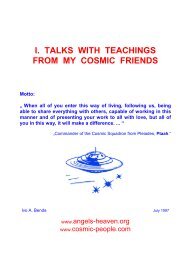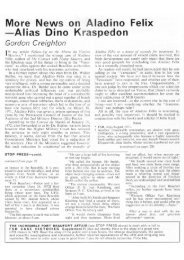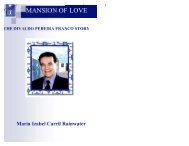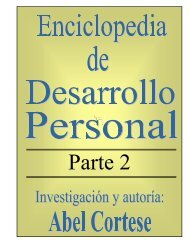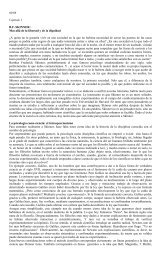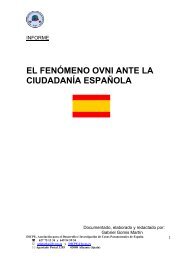The Word That is God
The Word That is God
The Word That is God
Create successful ePaper yourself
Turn your PDF publications into a flip-book with our unique Google optimized e-Paper software.
“One should make the atman one with the Unborn by means of Om.<br />
“<strong>The</strong>re <strong>is</strong> no difference between atman, Om, and the universe.<br />
“Om <strong>is</strong> the atman himself. One who knows th<strong>is</strong> has h<strong>is</strong> jivatman merged in the Paramatman.<br />
“On the great throne of one’s own heart one should install the atman by means of Om.<br />
“With the Pranava cons<strong>is</strong>ting of bl<strong>is</strong>s and immortality one should worship Brahma, V<strong>is</strong>hnu,<br />
and Shiva.<br />
“Th<strong>is</strong> atman, the highest Brahman, the Om sound, Who shines as Turiya at the top of the<br />
Om sound, one should worship and encompass Him in the word Om and meditate upon Him.<br />
“Th<strong>is</strong> atman, the highest Brahman, the Om sound, Who shines as Turiya at the top of the<br />
Om sound, one should meditate upon through the Pranava and make himself one with Brahman.<br />
“<strong>The</strong>refore, one who follows the way of life of the gods, he passes away in the Om sound,<br />
the highest Brahman. He sees in h<strong>is</strong> self the Highest Self, the highest Brahman.<br />
“Woven lengthw<strong>is</strong>e and crossw<strong>is</strong>e [in the fabric of the cosmos] <strong>is</strong> the Om. Om <strong>is</strong> indeed<br />
speech [Vak]; and speech <strong>is</strong> th<strong>is</strong> whole world. <strong>The</strong>refore both the atman and Om are one in<br />
the highest <strong>God</strong>.<br />
“Though not seeing Him [Brahman], you should see Him through the word Om. Th<strong>is</strong> <strong>is</strong><br />
the truth, <strong>is</strong> the atman, <strong>is</strong> Brahman, for Brahman <strong>is</strong> the atman. Indeed th<strong>is</strong> <strong>is</strong> not to be<br />
doubted: Om <strong>is</strong> the Reality. <strong>That</strong> <strong>is</strong> what the w<strong>is</strong>e see.”<br />
Narayana Upan<strong>is</strong>had<br />
“He [Narayana: V<strong>is</strong>hnu] merged into one with the inner bl<strong>is</strong>s, Brahman, the Purusha, the<br />
holy Syllable cons<strong>is</strong>ting of a, u, and m; and It became the sound Om. <strong>The</strong> yogi who has seen<br />
[experienced] th<strong>is</strong> <strong>is</strong> free from birth and samsara.<br />
“‘So pious was Devaki’s son, so pious was Madhusudana,’ as it <strong>is</strong> said, [because he<br />
perceived] Him Who dwells in all beings, one, Narayana, the cause, the causeless, the highest<br />
Brahman in the Omkara.” (Narayana Upan<strong>is</strong>had 5)<br />
Here again V<strong>is</strong>hnu (Narayana) <strong>is</strong> declared to be the mantric syllable Om. Furthermore,<br />
th<strong>is</strong> verse indicates that Kr<strong>is</strong>hna (the son of Devaki, also called Madhusudana), Who <strong>is</strong> considered<br />
an incarnation of Narayana (V<strong>is</strong>hnu), meditated upon <strong>God</strong> by means of Om.<br />
Parabrahman Upan<strong>is</strong>had<br />
“<strong>The</strong> Pranava <strong>is</strong> the atman. …To the ascetics seeking liberation, the bas<strong>is</strong> of the sacred<br />
thread <strong>is</strong> Pranava alone. …<strong>The</strong> Pranava <strong>is</strong> the sacred thread.”<br />
In Vedic religion, the sacred thread (yajnopavita) must be worn for the performance of the<br />
fire sacrifice (yajna). Th<strong>is</strong> verse thus means that Om both qualifies the yogi for the “sacrifice”<br />
of self-realization as well as being that sacrifice itself. <strong>That</strong> <strong>is</strong>, Om <strong>is</strong> both the means and the<br />
end. Moreover, the sacred thread <strong>is</strong> formed of three strands that represent the three letters<br />
of Om (a, u, and m).<br />
Also, monastics do not wear the sacred thread. Om becomes both their sacred thread and<br />
their sacrifice for which it <strong>is</strong> worn.<br />
Paramahansa Parivrajaka Upan<strong>is</strong>had<br />
41



